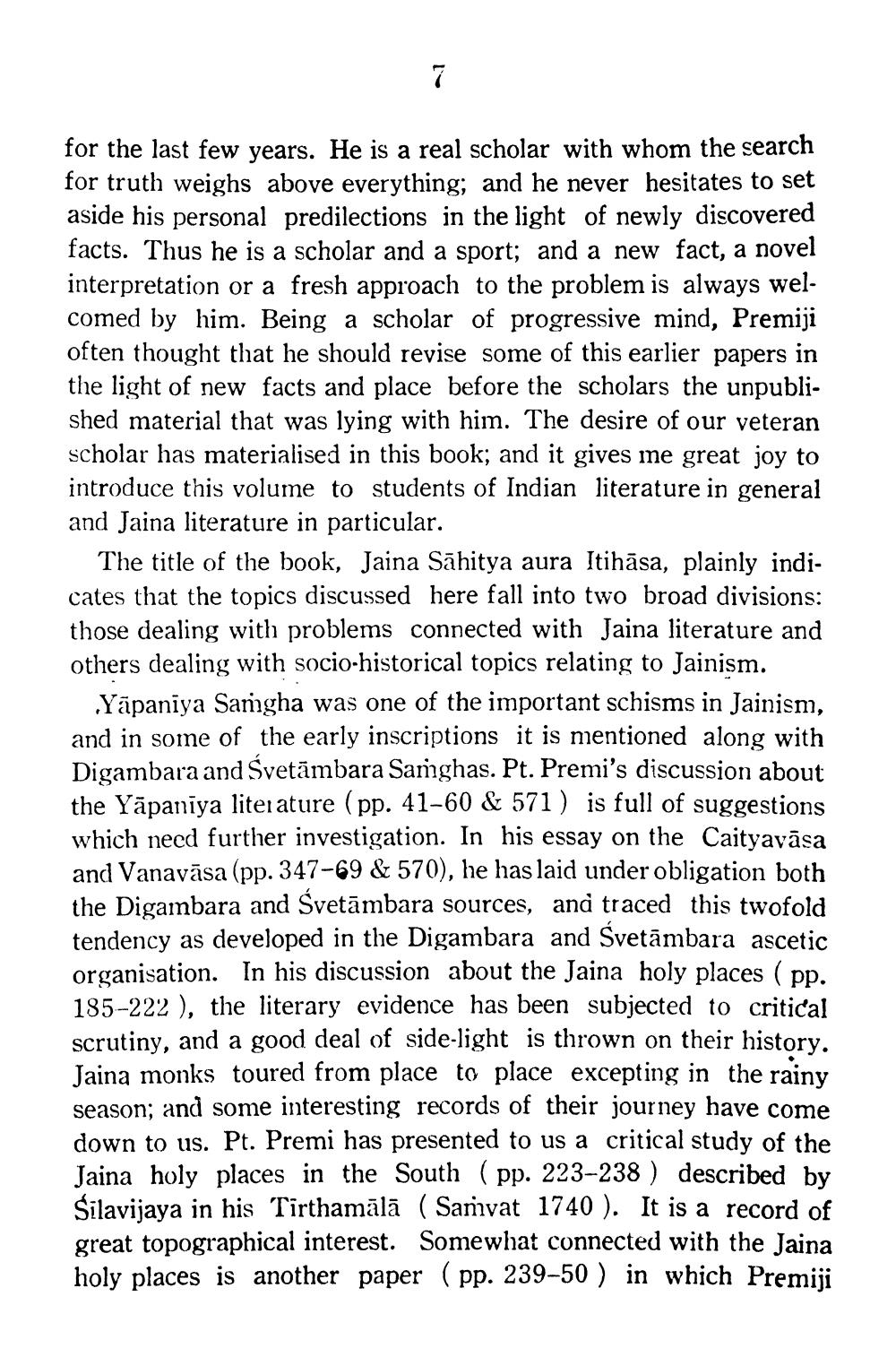________________
for the last few years. He is a real scholar with whom the search for truth weighs above everything; and he never hesitates to set aside his personal predilections in the light of newly discovered facts. Thus he is a scholar and a sport; and a new fact, a novel interpretation or a fresh approach to the problem is always welcomed by him. Being a scholar of progressive mind, Premiji often thought that he should revise some of this earlier papers in the light of new facts and place before the scholars the unpublished material that was lying with him. The desire of our veteran scholar has materialised in this book; and it gives me great joy to introduce this volume to students of Indian literature in general and Jaina literature in particular.
The title of the book, Jaina Sāhitya aura Itihāsa, plainly indicates that the topics discussed here fall into two broad divisions: those dealing with problems connected with Jaina literature and others dealing with socio-historical topics relating to Jainism.
Yāpanīya Samgha was one of the important schisms in Jainism, and in some of the early inscriptions it is mentioned along with Digambara and Svetāmbara Samghas. Pt. Premi's discussion about the Yāpaniya literature (pp. 41-60 & 571 ) is full of suggestions which need further investigation. In his essay on the Caityavāsa and Vanavāsa (pp. 347-69 & 570), he has laid under obligation both the Digambara and Svetāmbara sources, and traced this twofold tendency as developed in the Digambara and Svetāmbara ascetic organisation. In his discussion about the Jaina holy places ( pp. 185-222 ), the literary evidence has been subjected to critical scrutiny, and a good deal of side-light is thrown on their history. Jaina monks toured from place to place excepting in the rainy season; and some interesting records of their journey have come down to us. Pt. Premi has presented to us a critical study of the Jaina holy places in the South ( pp. 223-238 ) described by Silavijaya in his Tirthamālā (Samvat 1740 ). It is a record of great topographical interest. Somewhat connected with the Jaina holy places is another paper (pp. 239-50 ) in which Premiji




